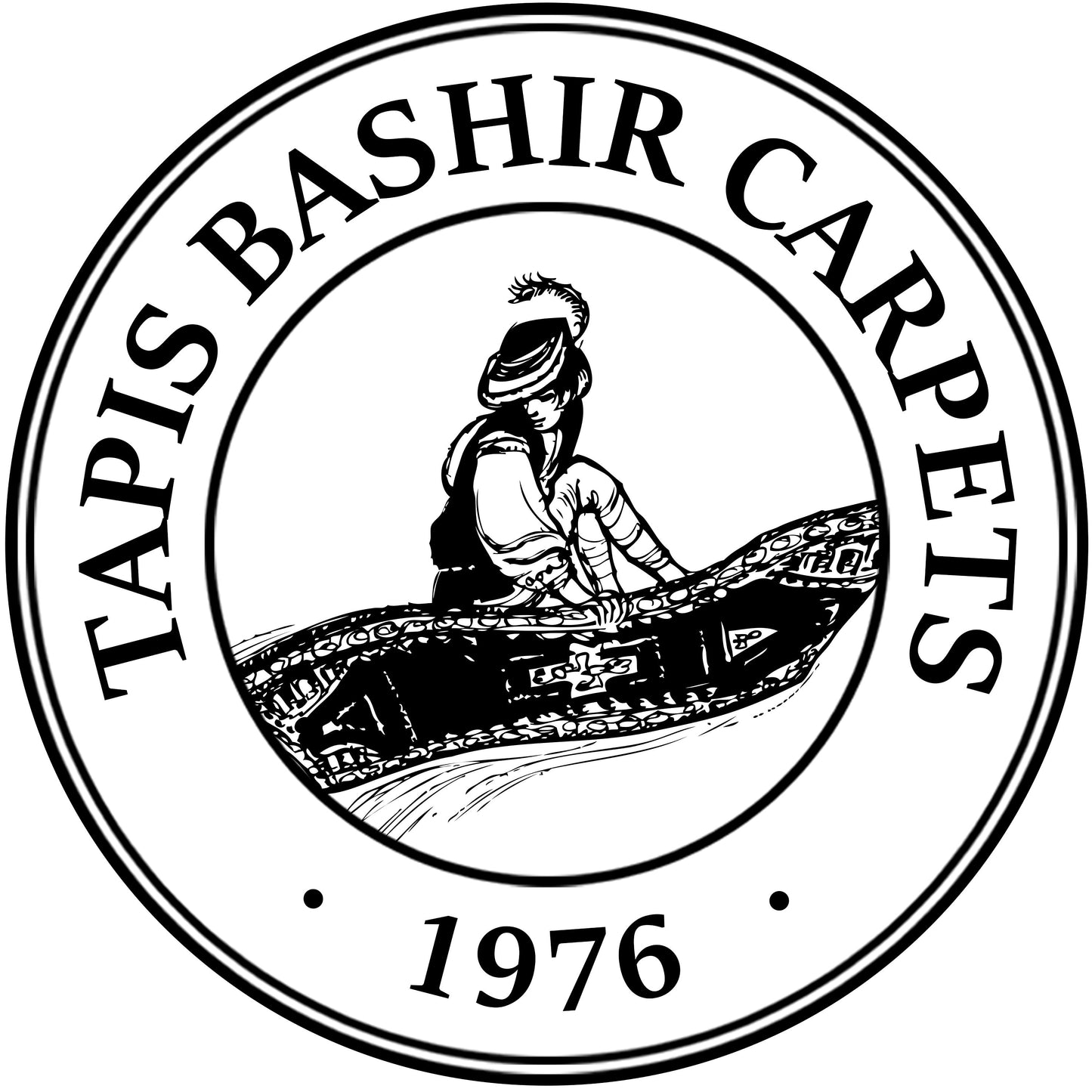Kāshān Lotus Silk Rug 6'4" x 4'1"
Overview
Finishing:
The finishing of this carpet was done using centuries old traditional techniques. Once its laborious hand-knotting was completed, it was rolled and entirely submerged in a sanitizing bath where its fibers fully absorbed all cleaning liquid. After which it was laid flat on the ground where a team of cleaners used wooden oar-like paddles to push the water through its fibers and draw out impurities. Oar strokes were done in sync to prevent the carpet from getting torn. Each stroke tightened the knots even further. No machines were involved in its washing or drying.
Materials & Craftsmanship:
This fine, diligently hand-knotted area rug contains a perfect blend of 80% pure silk and 20% pure wool. Persian & Oriental rugs made from a high percentage of silk are intricate and are often the most valuable of all handmade carpets. The silk fibers in this piece create a beautiful sheen throughout the field and borders, providing an ultra luxurious feel. The use of silk ensures a precise rendering of the decorative design patterns since strong silk fibers permit skilled weavers to weave more knots per square inch (KPSI) than those of wool carpets. A typical Persian or Oriental rug made from wool might have between 100 and 300 KPSI – a typical 80% silk rug contains between 200 to 500 KPSI. As a result, weaving the rug will require roughly three times the amount of work, and this is one of the main reasons that silk rugs cost two to three times more than wool rugs. The detailing of this piece also contains wool, which increases its durability.
Symbolism behind the Lotus Flower
 Lotus is native to Iran, India, China, Vietnam to Japan, Malaysia, New Guinea and Australia. It has been held sacred in Asia and the Middle East for over 5,000 years. It has been cultivated since early times, for religious and ornamental purposes. Lotus flowers have been used throughout history in South Asia and have been featured in Buddhist and Hindu art, carpets, textiles, architecture and literature. It was even a symbolically important plant before its use in religion as exemplified by the Indus Valley civilization.
Lotus is native to Iran, India, China, Vietnam to Japan, Malaysia, New Guinea and Australia. It has been held sacred in Asia and the Middle East for over 5,000 years. It has been cultivated since early times, for religious and ornamental purposes. Lotus flowers have been used throughout history in South Asia and have been featured in Buddhist and Hindu art, carpets, textiles, architecture and literature. It was even a symbolically important plant before its use in religion as exemplified by the Indus Valley civilization.
The flowers became symbolic of immortality and resurrection because people observed that they would grow from the bottom of dried up pools after the monsoon rains. Despite its early use, it was Buddhism which first brought the lotus symbol to widespread use. Lotus medallions are prominent on the Buddhist places of worship at Sanchi in Madhaya Pradesh and Amaravati in Andhra Pradesh dating from the 2nd century BC to the 2nd century AD. As Buddhism spread from India to Central Asia and China in the first few centuries AD, and lotus flowers were used to represent Buddha. They were featured on rosettes, scrolls, motifs and iconography.
The giant leaves of lotus plants were used as plates in ancient India, and its seeds and roots are still considered a delicacy. Texts from the 11th and 12th centuries noted lotus dishes and feasts in which their leaves were consumed. The lotus became a common feature woven into South Asia's culture. This continued with the advent of Islam in the 12th century AD. Lotus flowers had ancient connections with Persian culture, so they were already popular motifs on Islamic carpets, textiles and architecture. They feature in intricate patterns on perforated screens, tiles and ceramics.
Sources and inspiration: Bérinstain, Valérie, et al. L'art du tapis dans le monde (The art of carpets in the world). Paris: Mengès, 1996. Print.; Jerrehian Jr., Aram K.A. Oriental Rug Primer. Philadelphia: Running Press, 1980. Print.; Herbert, Janice Summers. Oriental Rugs, New York: Macmillan, 1982. Print.; Hackmack, Adolf. Chinese Carpets and Rugs, Rutland and Tokyo: Tuttle, 1980. Print. ; De Moubray, Amicia, and David Black. Carpets for the home, London: Laurence King Publishing, 1999. Print.; Jacobsen, Charles. Oriental Rugs A Complete Guide, Rutland and Tokyo: Tuttle, 1962. Print.; Bashir, S. (n.d.). Personal interview.; Web site sources and dates of consultation vary (to be confirmed). Without prejudice to official usage.
- Choosing a selection results in a full page refresh.
- Opens in a new window.



 Runner Rugs
Runner Rugs 2x3 Area Rugs
2x3 Area Rugs 3x5 Area Rugs
3x5 Area Rugs 4x6 Area Rugs
4x6 Area Rugs 5x7 Area Rugs
5x7 Area Rugs 6x9 Area Rugs
6x9 Area Rugs 8x10 Area Rugs
8x10 Area Rugs 9x12 Area Rugs
9x12 Area Rugs 10x14 Area Rugs
10x14 Area Rugs Round Rugs
Round Rugs Bath Mats
Bath Mats Doormats
Doormats 12x15 Area Rugs
12x15 Area Rugs




















